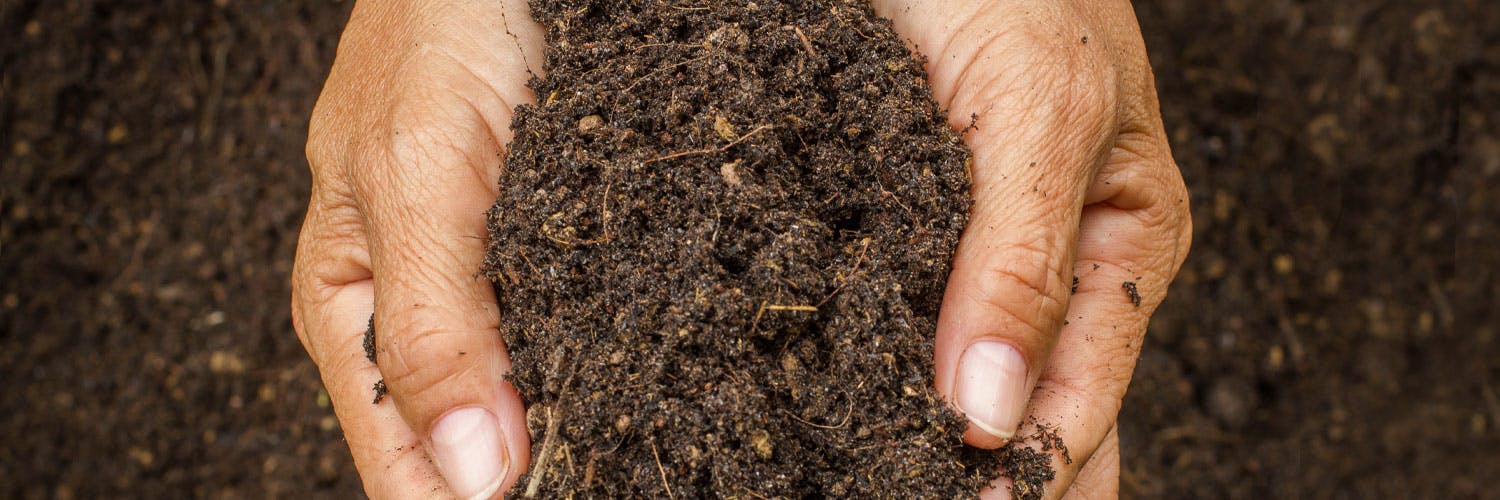Types of substrate for plants
Just as humans have different nutritional needs, which may be conditioned by age, sex, physical condition and others, plants also have different requirements when it comes to their substrate. Not all plants are suited to the same type of soil, for example, a moisture retentive substrate that would be perfect for a tropical plant could be deadly for a succulent. It sounds complicated, but we will explain everything in detail so that you can become an expert.

Just as humans have different nutritional needs, which can be conditioned by age, sex, physical condition and others, plants also have different requirements when it comes to their substrate. Not all plants are good for the same type of soil, for example, a substrate that retains the moisture that would be perfect for a tropical plant could be deadly for a succulent. It sounds complicated, but we will explain everything in detail so that you can become an expert.
The substrate
is nothing more than the solid medium that supports your plant, from which it will take some nutrients and the moisture it requires to make its own food. Substrates can be classified according to their properties and composition. From these properties we can define what type of substrate works well for each type of plant. Depending on their properties, substrates can be organic and mineral or inorganic.
Organic substrates:
They are of natural origin, produced by biological decomposition such as peats. They can also be by-products of certain foods, such as rice husks, cereal straw, coconut fibers, tree bark, and sawdust or wood shavings.
Mineral or inorganic substrates: There are naturally occurring substrates
, but they are obtained from rocks and minerals. They often go through simple treatments to process them, without altering their qualities. They are not biogradable, that is, they do not degrade over time. An example of these are gravel, sand and volcanic soil. It is also possible to find treated minerals, such as perlite, vermiculite, expanded clay, and rockwool. There are also industrial by-products, such as furnace slag, coal, among others.Characteristics of the
most popular substrates
Volcanic gravel: as the name implies, they are of volcanic origin. They are rich in alumina, silica and iron oxide, and can contain calcium, magnesium and phosphorus. Its pH is rather acidic, has good aeration and is very stable. Retains little water. There are some very specific ones, such as kanuma and kiryuzuna, which come from Japan and are great for bonsai.
Mulch or black soil: It is composed of materials of plant origin. It is the natural substrate that we usually find in gardens. Depending on its composition, it will look blacker or browner. It retains moisture very well, has a good nutrient content. Although it is suitable for a good number of plants, it is very likely that at some point it will have to be adapted so that they can develop better.
Peat: It is one of the most popular substrates. It is formed from the plant remains of swampy places. There is black peat, which has an acidic pH, between 7.5 to 8. Blonde peat moss is lighter, and has a more alkaline pH between 3 and 4. They hold water very well, but they tend to become too compacted.
Sand: The most recommended is river sand. It has a medium water retention and although it has good aeration, it can be compacted over time. It is used to prevent water from pooling and draining better.
Coco coir: improves the aeration of the substrate, improves moisture retention and prevents the appearance of fungi.
Vermiculite: It is a mineral that dehydrates when heated. It absorbs moisture very well.
Perlite: it is a volcanic glass, which absorbs water very well. It looks like white pebbles and is very porous.
What substrate should I use?
The type ofsubstrate will depend on the type of plant you have purchased. For example, azaleas, hydrangeas, camellias, gardenias, among others, require a substrate with the most acidic pH, so their substrate should contain porous materials with a certain degree of moisture. It could contain akadama and black mob, for example.
Palm trees are beautiful and can be grown indoors. For her, a mixture of mulch and perlite would do a lot of good. It is advised to put some gravel at the bottom to facilitate drainage. For tropical plants, you should look for a substrate with a balanced pH, but with materials that help retain moisture without causing waterlogging. One mixture that may work is peat moss, pine bark, rice husks, and perlite.
Succulents and cacti require efficient drainage, to prevent the roots from waterlogging and rotting. You can mix conventional soil with perlite, river sand, and always put a layer of gravel at the bottom of the pot. Flowering and fruiting plants don't require too much preparation, so a mixture of black peat moss, perlite, and a little mulch will do just fine.
Knowing about the types of substrate is important, but you don't have to worry too much because it is possible to find specific mixtures on the market already prepared for each type of plant.
If you have purchased your plant from a trusted place, such as Be Green, you can be sure that your new plant is in the best possible substrate for its species and when you need to transplant it, we can help you find the ideal mix.



